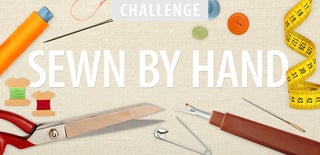Introduction: Baby's New Shoes
An old song says, "These shoes are made for walking, and that's just what they'll do…" and around here the next line could be, "Thanks Grandpa, these shoes are gonna walk all over your living room."
My leather-working hobby has included belts, wallets, gun-leather, and many other things, but this is the first time I've made shoes. Now, i'll never really be a shoe-maker, a very specialized and high-skilled trade. But, simple baby shoes are fun and fast. And, at this age, the "customers" are all smiles.
To make some you'll need some light leather. I used 4-6 oz veg tanned tooling leather from Tandy Leather. It allowed the wet-forming technique needed here. First, trace around the baby's foot, or even another baby shoe to get an outline of the shoe. My advice is always to make them just slightly bigger than needed, as babies grow surprisingly fast. You won't want to make these and find that they were the size needed a month earlier. Cut the outline from light card stock or heavy paper.
A pair of "lasts" will be needed. I made mine from a soft 2 x 4. Trace a right and left, by flipping the pattern you have made, and saw them out. Then using a saw, chisels, rasps, belt sander or carving knives, shape the lasts to match, and to a contour which looks like the other shoes you might see on store shelves. Also make some outline cauls as shown. These will be used to hold the leather in shape wile it dries.
Step 1:
Affix the lasts to a scrap of plywood as shown.
Step 2:
Make a pattern for the toe/uppers with a proper tongue and cut out two of these, leaving enough extra to allow for clamping to the wooden forms.
Step 3:
When dry, assemble the toe and heel portions on the sole material. I use the same leather for the bottoms as the tops as stiffness is not as important in a baby shoe as it is for adult shoes. Using a pencil mark the INSIDE outline of the shoe. Then, with good contact cement, coat the mating surfaces and allow to dry according to the package directions. When it's time, assemble the shoe uppers to the soles.
Step 4:
Begin sewing. I use a standard saddle stitch with two needles and threads.Then, trim as you wish. Thin cuts may be best to allow proper overhang all the way around. Use edgers and burnishes to round the edges. Oil, stain and seal your work and install eyelets if you have them, or just punch holes for the lacings. Voila! Shoes!!Then, trim as you wish. Thin cuts may be best to allow proper overhang all the way around. Use edgers and burnishes to round the edges. Oil, stain and seal your work and install eyelets if you have them, or just punch holes for the lacings. These shoes also have a very light suede leather sole, to add a bit more grip for beginning walkers, glued on over the sewn sole. Voila! Shoes!!

Runner Up in the
Sewn By Hand Challenge

Participated in the
Homemade Gifts Contest 2016











